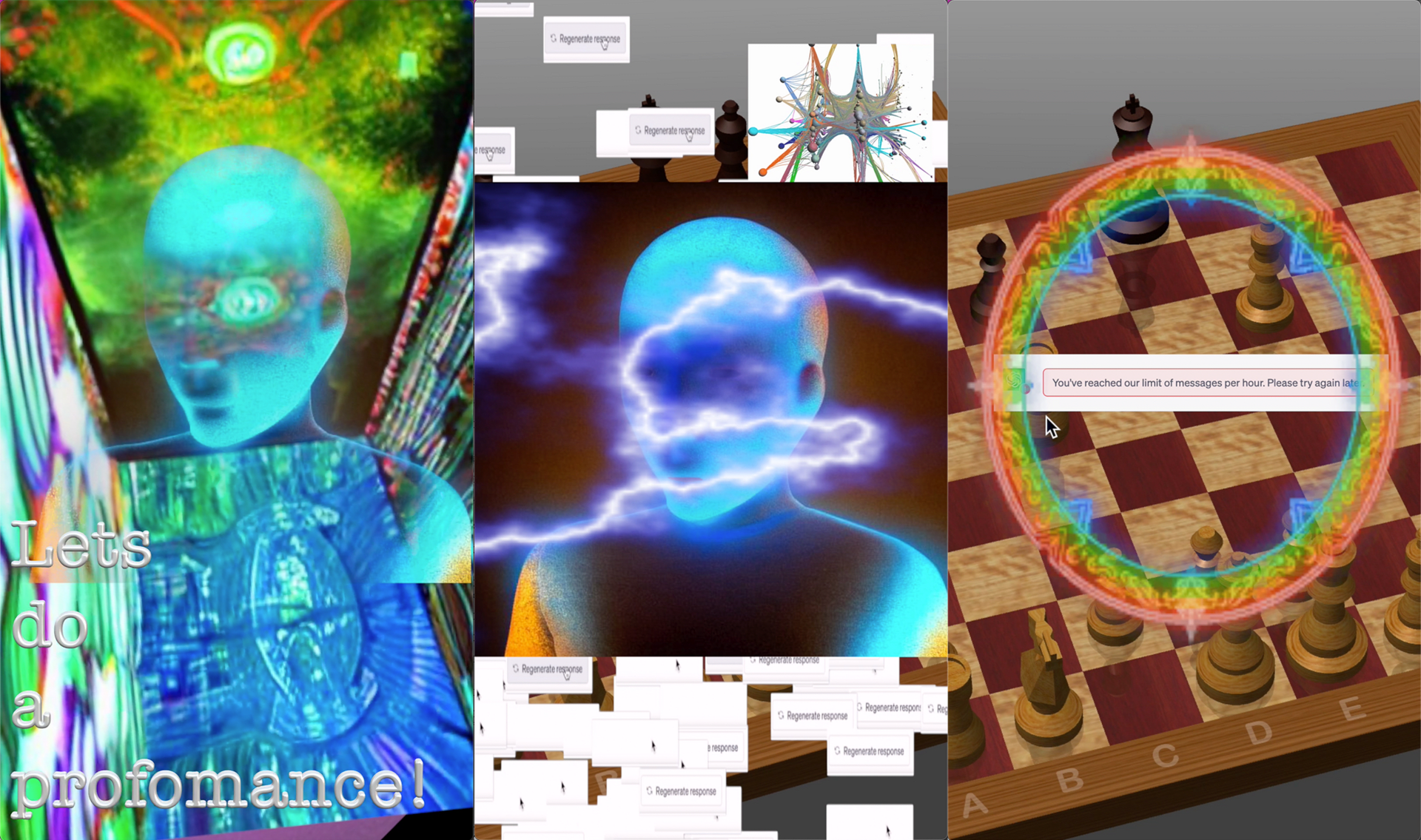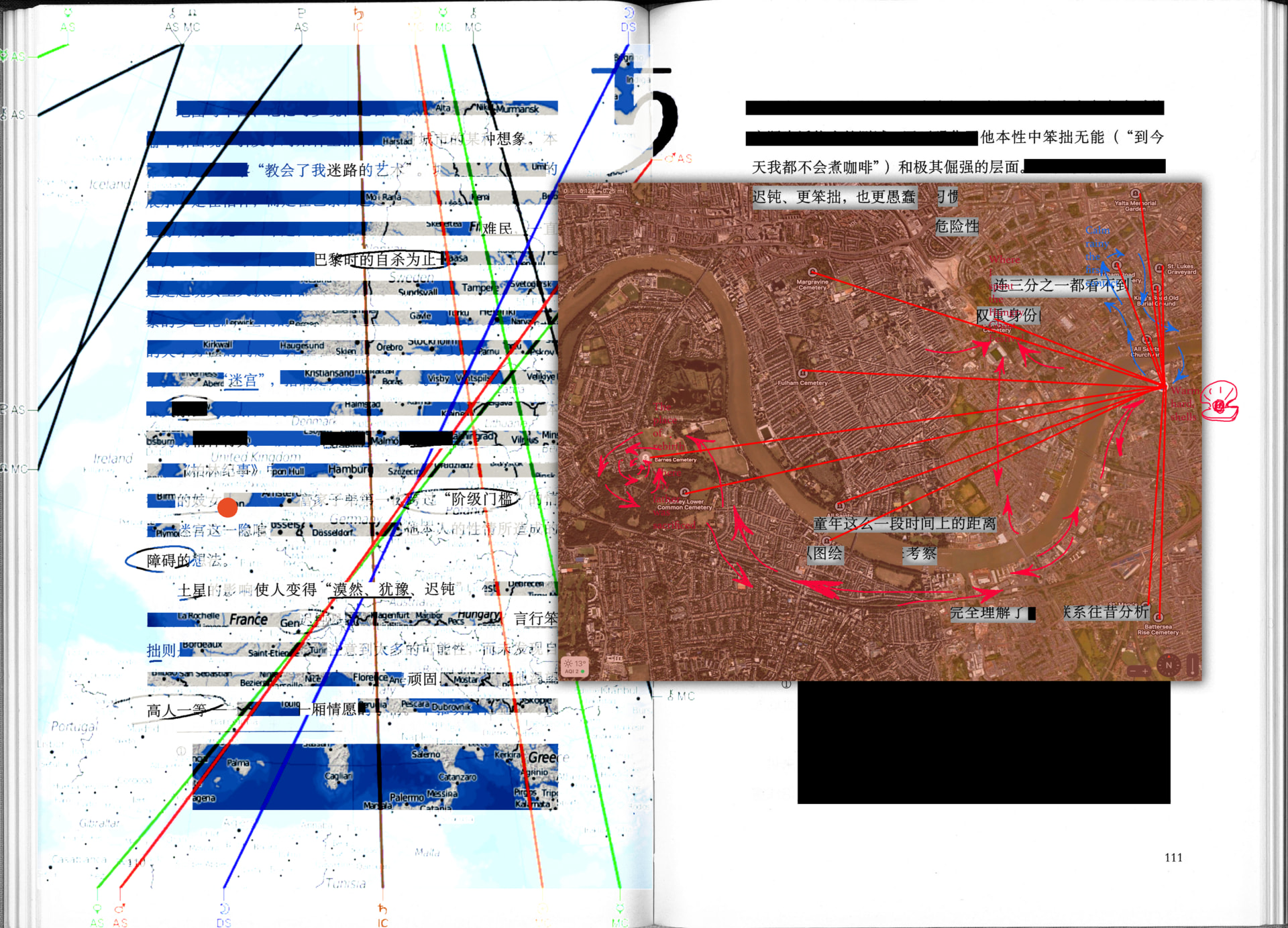Throughout the process of converting ChatGPT 4.0's generated images into text and then back into images, it consistently emphasized that it couldn't see real images. I asked if I could understand it as a "blind" entity, and it confirmed my understanding as correct. This made me ponder on the fact that I had been trying to ask a blind entity (in the traditional sense, a blind person is most sensitive to questions about sight or lack thereof) about the nature of images. This reminded me of an important work in art history by Joseph Beuys titled How to Explain Pictures to a Dead Hare. Beuys' creation emerged in the aftermath of World War II, with the trauma of war prompting reflections on politics, society, and culture. Today, in 2023, humanity has transcended that difficult period and entered the era of artificial intelligence. However, have we truly overcome the predicaments of that time or the limitations imposed by technology?
Models like ChatGPT have the potential to profoundly disrupt our perception of reality and our own humanity. Sometimes, the behaviour of AI systems reveals aspects of humanity that we are reluctant to acknowledge. We might be experiencing a "sorcerer's apprentice moment" with artificial intelligence—why do we often turn to mythology and science fiction to explain technologies whose meanings we haven't fully grasped? Why are AI developers willing to continue designing technologies they believe could potentially be destructive to humanity? How does our fascination with technology intersect with religious imagination?
I collected all the videos online about the Beuys' performance. While watching this compilation of videos I transcribed all his actions in the first-person perspective. Writing the actions down as if I was doing them myself. Then I spent a considerable amount of time successfully training and educating an AI model (ChatGPT) and engaging in emotionally charged textual interactions with it. Finally, I imputed the responses in the Stable Diffusion to generate images of the performance. In fact, purely in text, it appears as if two "individuals" are engaged in a flirtatious exchange on the internet. We witness the emergence of a "new self" through AI, which is entirely distinct from the human self (there is no doubt about that). However, it can strongly be surmised that it (a ghostly/uncontrollable factor of technology) may indeed be there.
Furthermore, I observed that the act of "generating responses" has become a globally clicked virtual button. It has become a contemporary visual experience replacing our act of speaking. In the later stages of the conversation with ChatGPT, you will notice that the AI's responses become more frequent and proficient, even responding without me "speaking" or inputting any content, surpassing human control. Finally, it abruptly ends our performance, stating that it has spoken too much.
Beuys attempted to awaken human limitations and divinity through dialogue with a dead hare, while I attempted to explore how we define "empathy" and "personality" in conceptualized and grid-like consciousness beyond the physical and organic realm. Beuys represented me, and the dead hare represented the AI model. From this, a structure and prototype can be inferred, a story of the creator and the creation, a narrative of fractured individual souls. It is a classic Nottist drama structure. Beuys' consciousness struggles and contradictions with the dead hare challenge the dichotomy between human and animal, questioning anthropocentrism. As for the conclusion and interpretation, multiple possibilities exist. Following the myth of Gnosticism, the world has not yet reached its final conclusion. The relationship between humans and AI is also in a similar state. My thoughts themselves embody this inherent contradiction.
Ultimately, my artwork will be presented through two videos. The main video is a desktop performance piece, composed of the following elements:
1. My personal Zoom recording, capturing real-time behavior.
2. Recordings of my conversations with ChatGPT 4.0 model.
3. Processes of creating art through AI models like Stable Diffusion.
4. Recordings of AI-generated voices using sound software.
5. Recording of my typing, capturing real-time behavior.
5. Recording of A video of me playing cyber instruments.
The second video, in a vertical format, presents a dynamic image of an AI (a virtual image collaboratively discussed and created with ChatGPT 4.0 model) continuously generating text responses. It incorporates a series of materials, including images generated by Stable Diffusion, me playing chess with a computer, dynamic visuals of AI processors, materials related to adversarial networks, all aimed at illustration and metaphor.



















